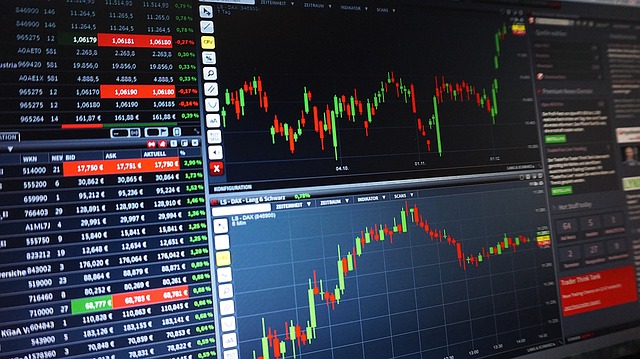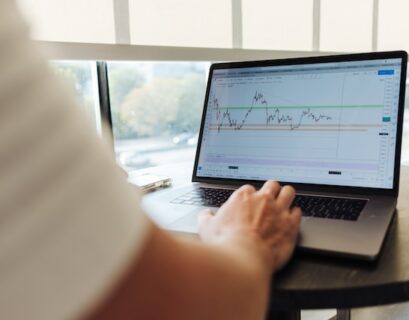With a history of substantial volatility, the exchange rate of the dollar has experienced substantial strain due to international events, resulting in considerable depreciation during 2022-2023.
As a growing number of novice traders step into the financial markets, the activity in currency trading analysis has also seen an increase.
This article will serve as a comprehensive guide, explaining the basics of Currency trading and providing actionable advice for getting started in India.
Understanding Currency Trading
Also known as Currency or Foreign Exchange Trading, currency trading analysis involves the purchase and sale of different nations’ currencies, intending to turn a profit. In India, the currencies that are most often traded include the US dollar, Euro, Japanese Yen, and British Pound.
The primary principle in Currency trading is to buy a currency at a low rate and sell it at a higher rate or vice versa. The “spread,” or the difference between the purchase and selling price, is where traders generate their profit.
Indian Currency Trading Timings
In India, Currency trading occurs within the foreign exchange market, a platform that remains open 24 hours a day, five days a week. The Reserve Bank of India operates from 9:00 AM to 5:00 PM, daily, dictating the official Indian currency trading analysis hours. Yet, due to the global nature of the Currency market, trading continues around the clock.
Currency trading in India primarily occurs through two major exchanges – the National Stock Exchange (NSE) and the Bombay Stock Exchange (BSE). These platforms allow trading in various currency pairs such as USD/INR, EUR/INR, GBP/INR, and JPY/INR. Traders can engage in Currency trading via online platforms facilitated by brokers.
For new traders, understanding the inherent risks in Currency trading, given its volatile nature, is crucial. It’s wise to start with a modest investment and increase it as you acquire experience and expertise.
Starting Currency Trading in India: A Step-by-Step Guide
The procedure to begin Currency trading in India is similar to trading in stocks or other securities. Below are the steps to initiate currency trading analysis in India.
-
Understand the Basics
It’s vital to comprehend the market dynamics and different strategies used for trading decisions before diving into Currency trading. Starting with basic terminologies like pips, lots, and spreads, traders should progress toward complex concepts like technical analysis, fundamental analysis, and risk management. Multiple resources, including online courses, webinars, articles, books, and seminars, are available to help novices understand Currency trading.
-
Select a Broker
The choice of broker is integral to a trader’s success. Ensure that your broker is licensed and regulated by the Securities and Exchange Board of India (SEBI), offers a reliable and user-friendly trading platform, and charges competitive fees with low spreads, directly impacting your profits.
-
Create a Trading Account
After choosing a broker, traders can set up a trading account by filling out an online application form and submitting the necessary KYC documents. The broker will verify these details, and upon completion, the account will be activated.
-
Deposit Funds into Your Account
With the trading account activated, traders need to fund it based on the minimum deposit requirement set by the broker. Some brokers allow the use of existing trading accounts and funds used for stock trading. If additional funds are needed, they can be added using payment modes like NEFT, RTGS, UPI, and credit/debit cards provided by the broker.
-
Choose a Currency Pair
The next step is to select the currency pair for trading. For instance, if a trader anticipates that the USD will strengthen against the INR, they can trade in the USD/INR pair. Several pairs such as USD/INR, EUR/INR, GBP/INR, and JPY/INR are available for trading.
-
Place Your Trade
After choosing the currency pair, traders can place a buy or sell order. They can also set stop-loss orders to limit potential losses and take-profit orders to secure profits.
-
Monitor Your Trades
Stay informed about market news and events affecting currency markets, and adjust your trading strategy accordingly. It’s crucial to follow a trading plan and avoid emotional decision-making.
Popular Currency Trading Strategies
There are various strategies employed by Currency traders to guide their operations, navigate market fluctuations, and secure potential profits.
Here are five commonly used trading strategies:
-
Trend Trading:
This strategy is based on the concept of ‘trend following.’ Traders utilizing this method identify the overall direction or trend of a currency pair’s movement and aim to make trades that align with this trend. To determine trends, they use various technical analysis tools such as moving averages, trendlines, and indicators. Once a trend is established, traders look for opportunities to buy in an uptrend and sell in a downtrend, thus capitalizing on the market momentum.
-
News Trading:
This approach involves making trading decisions based on economic news releases that can significantly impact the currency markets. Traders using this strategy monitor economic calendars to stay updated about key announcements such as GDP figures, employment data, and interest rate decisions. They then predict how these news events might affect currency pairs and execute their trades accordingly. However, this strategy requires a good understanding of economics and the ability to interpret complex financial data swiftly.
-
Range Trading:
Also known as ‘channel trading’, this strategy is based on the observation that currency pairs often fluctuate within certain price ranges or ‘channels’ for extended periods. Traders identify these ranges using support and resistance levels. The lower range (support) is a price level at which demand is strong enough to prevent the price from falling further, while the upper range (resistance) is where selling is robust enough to stop the price from rising more. Traders aim to buy at or near the support and sell at or near the resistance. This strategy is most effective in a stable market without significant news events causing price volatility.
-
Breakout Trading:
In contrast to range trading, breakout trading focuses on instances when the price ‘breaks out’ of a previously established range or pattern. When the price crosses a significant support or resistance level with increased volume, it’s considered a breakout, signifying that the currency pair might continue to move in the breakout direction. Traders aim to enter the market just as the breakout happens, hoping to profit from the strong move. Proper risk management is vital in this strategy, as false breakouts can lead to losses.
-
Carry Trading:
This strategy is a bit more complex and involves exploiting the interest rate differential between two currencies. Traders using this strategy buy a currency with a higher interest rate while simultaneously selling a currency with a lower interest rate. The goal is to ‘carry’ the position over to the next trading day and earn interest. However, this strategy involves a certain degree of risk, as exchange rate fluctuations could offset potential interest gains.
These strategies are commonly used by traders, but it’s important to note that their success depends on individual understanding, market conditions, risk tolerance, and meticulous execution. Traders should choose a strategy that aligns best with their trading style, financial goals, and risk appetite.
Bottom Line
Introduced formally in India in 2008, currency trading analysis is riskier compared to stock trading, due to numerous global factors influencing currency values and the need for 24/7 market monitoring. Therefore, traders must understand these factors and their impact on currencies to maintain profitable trading portfolios.
Disclaimer
The information provided by CurrencyVeda is intended for educational purposes only and does not constitute financial advice. We aim to ensure the accuracy of our content, but we are not responsible for any financial decisions based on this information. Please consult with a financial advisor before engaging in trading activities.








[…] to understand the importance of fundamental analysis. In this blog, we will delve into the world of currency trading fundamental analysis, exploring its significance, key components, and how it influences trading […]
[…] not be the go-to tool for short-term traders in day-to-day markets, it holds the key to deciphering long-term trends and outcomes in […]
[…] here is a Complete Guide to currency trading analysis– Please read, its very comprehensive if you want to understand currency […]
[…] trading strategies incorporate both technical and fundamental analysis to decide the best times to buy and sell currency pairs. These strategies not only help garner […]
[…] Forex market analysis is a multi-faceted process involving two main approaches: basic analysis and technical analysis. […]